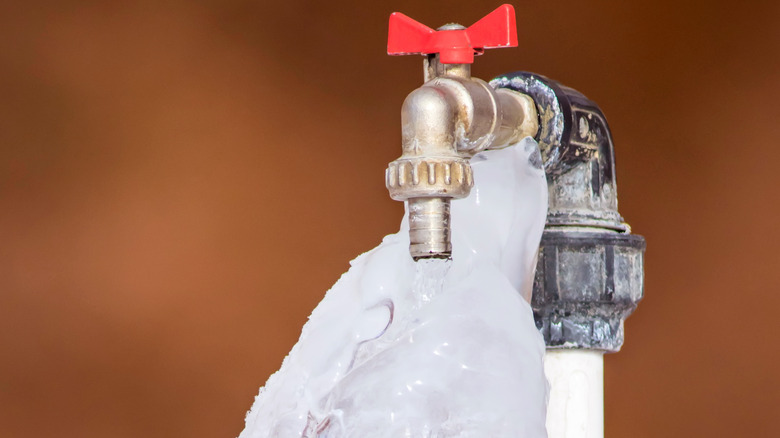How to Keep Your Pipes from Freezing Damage: Important Guidance
How to Keep Your Pipes from Freezing Damage: Important Guidance
Blog Article
On this page on the next paragraphs you can discover a lot of superb news pertaining to 6 Ways to Prevent Frozen Pipes.

Cold weather can damage your plumbing, specifically by freezing pipelines. Here's just how to stop it from taking place and what to do if it does.
Introduction
As temperatures decrease, the danger of frozen pipes rises, possibly resulting in pricey repair work and water damages. Comprehending just how to avoid frozen pipes is important for property owners in chilly environments.
Comprehending Frozen Pipes
What causes pipelines to ice up?
Pipelines ice up when subjected to temperature levels listed below 32 ° F (0 ° C) for extended periods. As water inside the pipes freezes, it expands, putting pressure on the pipeline wall surfaces and possibly causing them to burst.
Threats and damages
Frozen pipes can lead to water supply disruptions, residential property damages, and costly repairs. Ruptured pipes can flooding homes and cause substantial structural damages.
Signs of Frozen Piping
Determining icy pipes early can avoid them from breaking.
Exactly how to identify icy pipes
Seek lowered water circulation from faucets, unusual odors or sounds from pipelines, and visible frost on exposed pipes.
Avoidance Tips
Insulating prone pipelines
Cover pipes in insulation sleeves or use warmth tape to protect them from freezing temperatures. Focus on pipes in unheated or exterior areas of the home.
Home heating strategies
Maintain indoor areas adequately heated, particularly areas with plumbing. Open cabinet doors to permit cozy air to circulate around pipes under sinks.
Securing Outdoor Pipes
Garden pipes and outdoor taps
Disconnect and drain yard hose pipes prior to winter season. Mount frost-proof spigots or cover outside taps with insulated caps.
What to Do If Your Pipelines Freeze
Immediate activities to take
If you think icy pipelines, keep faucets available to relieve stress as the ice thaws. Make use of a hairdryer or towels taken in hot water to thaw pipes slowly.
Long-Term Solutions
Structural adjustments
Think about rerouting pipelines far from outside wall surfaces or unheated locations. Include added insulation to attic rooms, cellars, and crawl spaces.
Updating insulation
Purchase high-grade insulation for pipelines, attic rooms, and wall surfaces. Appropriate insulation helps keep consistent temperatures and lowers the threat of frozen pipes.
Conclusion
Protecting against frozen pipelines needs aggressive actions and fast feedbacks. By understanding the causes, indications, and preventive measures, home owners can shield their plumbing during winter.
5 Ways to Prevent Frozen Pipes
Drain Outdoor Faucets and Disconnect Hoses
First, close the shut-off valve that controls the flow of water in the pipe to your outdoor faucet. Then, head outside to disconnect and drain your hose and open the outdoor faucet to allow the water to completely drain out of the line. Turn off the faucet when done. Finally, head back to the shut-off valve and drain the remaining water inside the pipe into a bucket or container. Additionally, if you have a home irrigation system, you should consider hiring an expert to clear the system of water each year.
Insulate Pipes
One of the best and most cost-effective methods for preventing frozen water pipes is to wrap your pipes with insulation. This is especially important for areas in your home that aren’t exposed to heat, such as an attic. We suggest using foam sleeves, which can typically be found at your local hardware store.
Keep Heat Running at 65
Your pipes are located inside your walls, and the temperature there is much colder than the rest of the house. To prevent your pipes from freezing, The Insurance Information Institute suggests that you keep your home heated to at least 65 degrees, even when traveling. You may want to invest in smart devices that can keep an eye on the temperature in your home while you’re away.
Leave Water Dripping
Moving water — even a small trickle — can prevent ice from forming inside your pipes. When freezing temps are imminent, start a drip of water from all faucets that serve exposed pipes. Leaving a few faucets running will also help relieve pressure inside the pipes and help prevent a rupture if the water inside freezes.
Open Cupboard Doors
Warm your kitchen and bathroom pipes by opening cupboards and vanities. You should also leave your interior doors ajar to help warm air circulate evenly throughout your home.

I ran across that page about 6 Ways to Prevent Frozen Pipes while doing a lookup on the web. Sharing is good. One never knows, you may just be helping someone out. We take joy in reading our article about How To Avoid Freezing Pipes.
Pricing Report this page